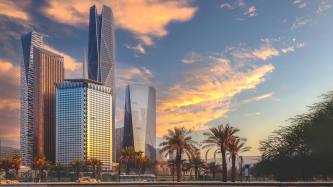Sovereign wealth funds (SWFs) are to meet in Santiago, Chile, at the start of September to refine the voluntary code of behaviour they plan to present at the forthcoming IMF/World Bank annual meetings.
The new code, already dubbed GAPP (generally accepted principles and practices), is designed to reassure Western governments that have expressed concern about the funds’ secretiveness and the risk that some of their investment decisions might be politically motivated.
Welcome capital
Of course, SWFs are not new. The likes of the Abu Dhabi Investment Authority (ADIA) and the Kuwait Investment Authority (KIA) are familiar players, long noted for their conservative and apolitical approach to the acquisition of assets. Their acquisition of multi-billion dollar stakes in Citigroup and Merrill Lynch – much appreciated capital boosts to banks hit hard by the subprime crisis – are remarkable only for their scale.
“Organisations such as ADIA or KIA have great depth and institutional professionalism,” Barclays Capital vice-chairman Cyrus Ardalan recently told the City and Gulf Co-operation Council conference organised by the Middle East Association.
However, it would be naïve to deny that times have changed. Sovereign investment today is taking place on a scale unimaginable in previous decades and it is taking vastly more diverse forms.
The growth in SWFs is the result largely of the world commodities boom, which has generated a dramatic upsurge in the hard currency earnings of the major exporters of oil, gas and metal ores. And the boom is partly explained by the spectacular expansion of emerging economies such as China, which are now becoming sovereign investors in their own right.
These circumstances have combined to produce a vastly more diverse and, in some respects, ambitious range of sovereign investors. The likes of ADIA and KIA have traditionally adopted a low profile and refrained from taking majority stakes in major Western companies. But such shyness is slipping out of fashion. Today’s Gulf sovereign or sub-sovereign players, such Dubai and Qatar, are buying into high-profile targets and prestige projects. They want financial returns, but are looking beyond that, seeing investment as a means of raising their public profiles and achieving economic diversification.
New style of activity
So sovereign activity is no longer confined to the use of old-style national asset managers. Today Gulf governments are spreading their international wings through state-owned companies that are major commercial actors in their own right – such as the Dubai ports group DP World or Qatar National Bank (QNB).
In May, for example, Qatari finance minister Yousef Husain Kamal pitched up in London for the launch of an investor consortium that is financing development of the “shard of glass” skyscraper, in which QNB is partnering the private sector. Meanwhile, in contrast to the cautious KIA, the Qatar Investment Authority last year attempted to secure outright control of UK supermarket group J Sainsbury. There is speculation that there may soon be a fresh attempt.
Dubai has been another bullishly expansionist sovereign investor, particularly in sectors such as transport and, through the state-owned Nakheel and Emaar, in real estate. The more activist approach has also been adopted by some hitherto conservative actors. In early July, the parastatal Abu Dhabi Investment Council bought the iconic Chrysler Building in New York.
The acquisition of such prestige symbols or familiar consumer names provokes public comment. But it is the sovereign players’ decisions to take stakes in Western institutions of strategic economic importance, such as major banks, that has fuelled the pressure for them to be more open about their internal economics and their strategies.
Occasionally, concern appears to be motivated by xenophobic distrust of the Arab world, as in the case of US congressional opposition to DP World’s potential control of the US ports it stood to acquire through the takeover of P&O in 2005/06.
But SWF ambitions also raise more credible questions about, for example, financial transparency, competition policy or political influence on investment decisions. These are the issues that the new guidelines being developed by the funds’ working group are intended to address. The working group says it will deal with institutional, governance and operational issues, and the question of disclosure of holdings. At present, the funds remain secretive about the latter point.
Research by the Council on Foreign Relations in the US suggests that most Gulf SWFs place half or more of their portfolios in equities, while in terms of currency, the dollar is now often balanced or even outweighed by the combination of euro and sterling.
In terms of total asset value, there is no doubt that ADIA is the wealthiest, but external estimates of its value are now mostly above $800bn, while the KIA has more than $200bn. Saudi Arabia has larger oil revenues but also, of course, much greater domestic public spending needs; the central bank, the Saudi Arabian Monetary Agency (SAMA), is believed to manage $350bn or more.
Not that all Western governments are sceptical. UK Treasury minister Kitty Ussher has been positively effusive in affirming the UK’s welcome for SWF money. She told the City & GCC conference that while the British government supported IMF and Organisation for Economic Co-operation and Development efforts to develop SWF best practice, it started “from the principle that SWFs acting commercially should be treated in the same way as any other investors – with a few exceptions around certain industries. SWFs are welcome in the UK, perhaps more than they are in some other countries.”











